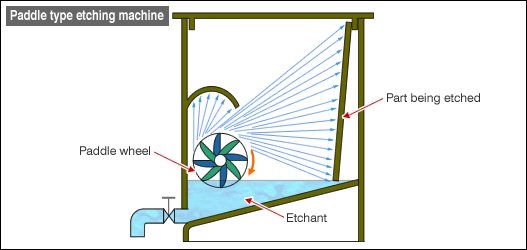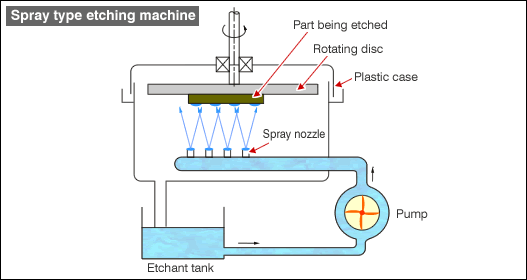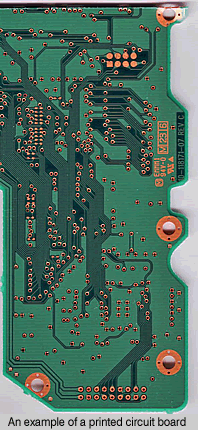Chemical blanking post processes include: removal of masking material; rust inhibitor treatment; finishing and inspection.
Parts that are created by chemical blanking are seldom used with the masking material still remaining on the surfaces. The remaining mask material must therefore be removed by some means.
There are various masking materials used and there are dedicated removers specified for them. In other cases, the mask materials are removed by immersing the parts in trichloroethylene, xylene, or benzene.
Typically, the masking materials are more easily dissolved in alkali. Photo-resist material (material used for creating patterns by light exposure) are especially so and usually removed by immersion in heated caustic soda 10~30% solution.
If the masking material is not easily removed by simple immersion alone, scrubbing with gauze and/or brush is applied. For mass production schemes, machines that remove the masking material by spraying are used.
After removing the masking material, water wash and drying are performed. If necessary, rust inhibitor application process is to follow.
A point of caution for etching process is Side Etch. The corrosion of etching process advances vertically as well as horizontally. The horizontal direction advancement is called Side Etch (s), or Side Cut. The figure [Fig.1] below is a cross sectional view of etched surface. The area of side etch (s=(w2-w1)/2) increases as the etching depth (d) increases.
Nature of the side etch phenomena vary with the metal property, composition of etchants, and etching conditions. Little issues exist when the metal thickness to be etched is small (i.e. several micrometers), but thicker metal will be troublesome.
To minimize the side etch effects, selecting proper etchant becomes important. Etchants with corrosion inhibitors are often used. Etching methods also affect this. The spray type and paddle type etching systems where the etchant is applied perpendicular to the targets will result in smaller side etch as compared to immersion etching method.
![[Fig.1] Cross section view of etched surface [Fig.1] Cross section view of etched surface](http://www.misumi-techcentral.com/tt/en/surface/images/026.gif)



